Waller's balsam: description, varieties, subtleties of care
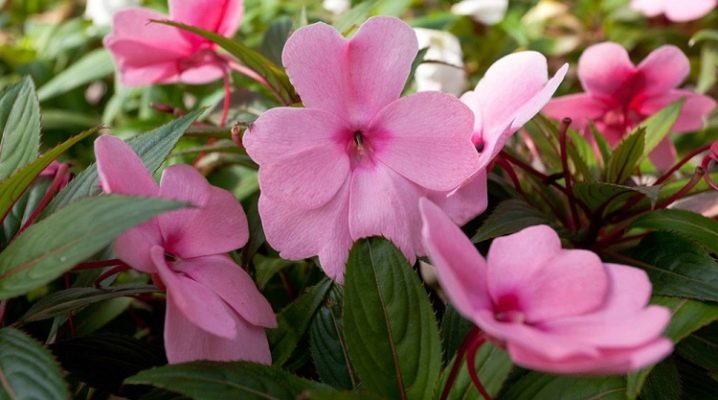
Today, one of the most popular types of indoor plants is Waller's balsam from the balsam family. Many also plant flowers in the garden, but in the harsh winters, the plant dies, so in this case the plant will serve as a decoration for your yard for no more than one year. What can not be said about indoor conditions, in such an environment, the life expectancy of balsam increases by several years. The plant gained fame for its amazing property to shoot a box containing seeds at every touch of it. Due to such an unusual property, the people called the flower touchy.
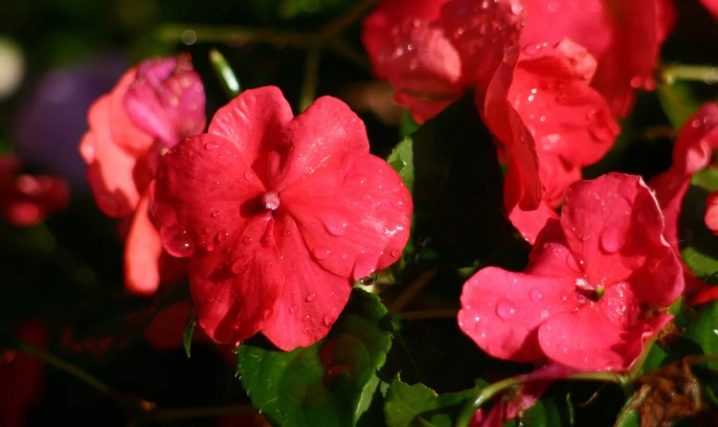
Description
A herb called Waller's balsam is suitable for growing both outdoors and indoors. Often in the house, the plant looks larger and more graceful. The advantage is that the flower in such conditions will be perennial, which cannot be said about growing in the open field. Usually balsam, which flaunts in decorative outdoor pots, is called "summer", since the plant is unable to live for more than a year due to the peculiarities of the climate. But this does not mean that when grown outdoors, flowers lose their appearance, they also serve as a wonderful decoration for your yard.
The natural habitat of Waller's balsam is rainforest. One of the main advantages of the plant is a high level of adaptation to climatic conditions of middle latitude.
Today, balsam is considered one of the most popular annuals in the landscape design field.
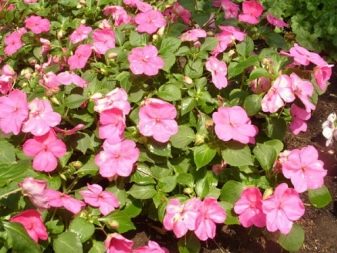
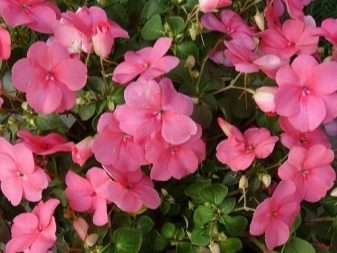
- Waller's balsam outwardly is a small and very lush bush. Plant height varies from 15 to 20 centimeters. In the landscape design of the garden, it often plays the role of a ground cover due to its compact size.
- The root system of balsam is fibrous. It is known to have a superficial disposition. As for the branches of the plant, they are quite spreading and juicy. This feature makes the plant vulnerable during rains or strong winds. Therefore, when choosing a location, it is recommended to take into account the specific feature of balsam.
- The color of the leaves depends on the specific variety of the given plant species. In some cases, they can have not only a rich green color, but also a lighter shade.
- Shape, size and shade of balsam flowers are also an individual characteristic of a certain variety. The range of colors and textures has a huge variety. The flowers can in some cases be double or simple, and the color will be delicate pink or elegant red.
- Balsam is also known for its frequent flowering of variegated inflorescences., which are distinguished by their enormous abundance. After the first shoots of the plant have appeared, you can count down to the flowering of balsam. On average, this process takes about 100 days. The period of rapid flowering can last from mid-summer to the very frost. During this period, the shrub looks like a shining ball due to the abundance of flowers on it.
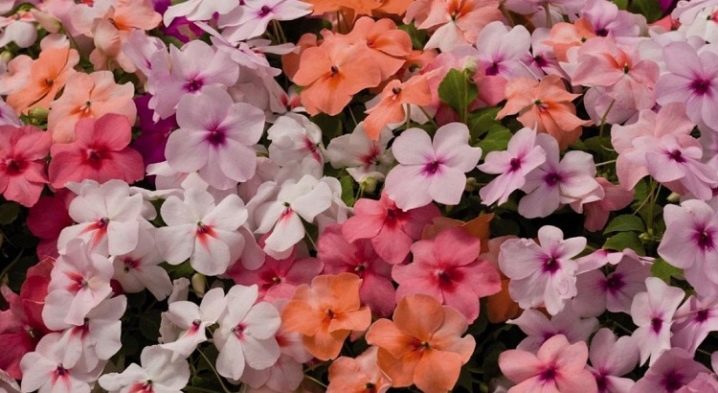
Popular varieties
Waller's balsam is very popular these days. This led to the fact that new varieties of this plant species began to appear. There are already so many of them that one series of these plants is a mixture of varieties and hybrids. Let's consider the most popular ones.
- "Stardust"... This variety of balsam is rather small in size. The shrub is distinguished among the whole variety of representatives of this plant by the presence of a spot of white color in the very center of the flowers.

- Siphoni. Representatives of this variety are distinguished by a variety of colors of inflorescences. A distinctive feature is that the height of the plant does not exceed 20 centimeters.
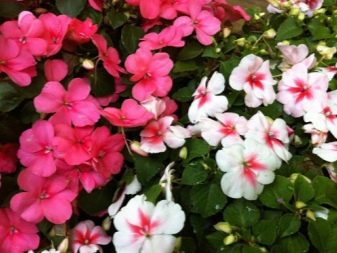
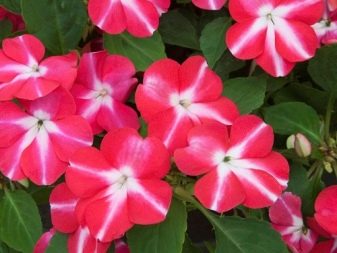
- "Futura". This series of varieties of Waller's balsam belongs to the ampelous representatives of the species. They are distinguished by long, winding stems. Plants have large buds, and their height reaches about 30 centimeters.
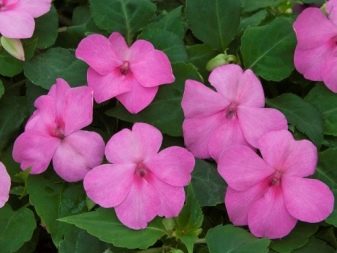
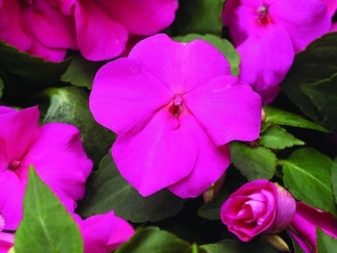
- Starflake Rose... Compared to the rest of the series of varieties, this plant has an average size. The color of the inflorescence is purple, the leaves are rich green.
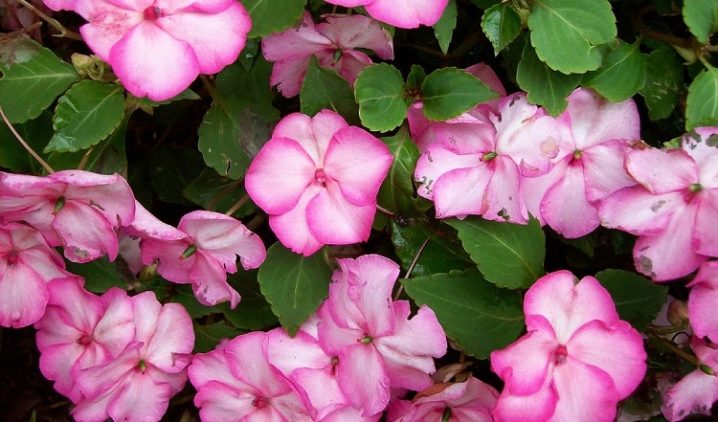
- Fansiful Tropical. Unlike the above varieties, this variety belongs to the terry representatives of the species. The characteristic color of the inflorescence is coral.
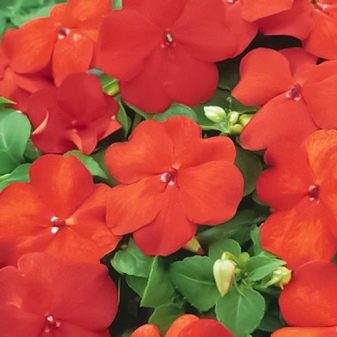
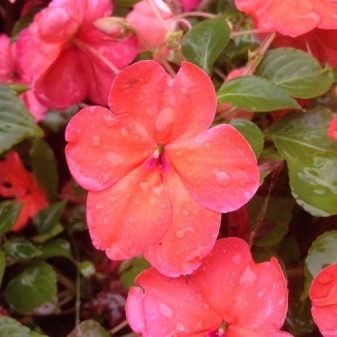
- "Orange Temptation" F1. The plant has a spherical shape, its size does not exceed 30 centimeters. The color of the inflorescences is dominated by an orange tint.
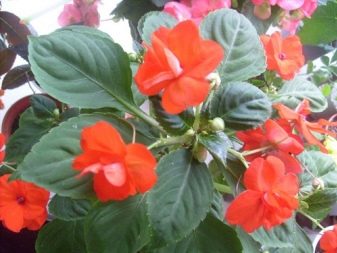
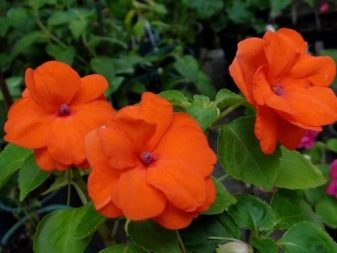
- Stardust Lavender. Representatives of this series cannot but amaze with the originality of their flowers. They resemble little roses. Among the color range of inflorescences, coral and light pink shades prevail.

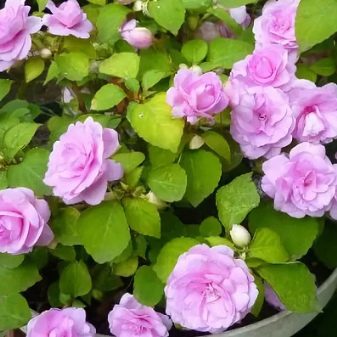
- "King Kong". In this case, the name speaks for itself. The size of representatives of this variety of balsam can reach 30 centimeters. The buds are incredibly large with contrasting colors.
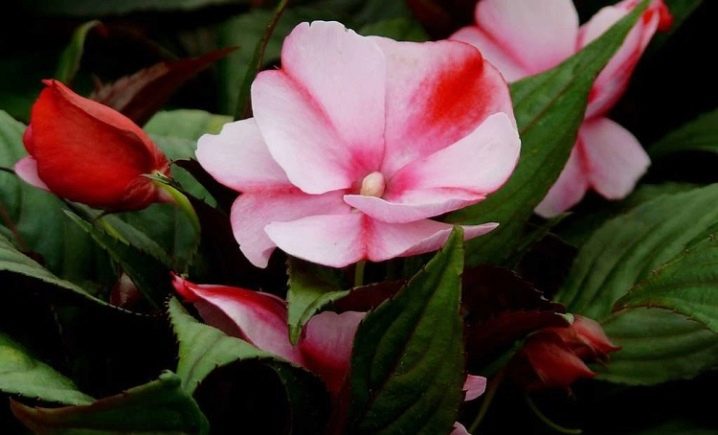
- "Islands". These representatives of balsam are a mixture of hybrid plant varieties (double and semi-double). A shrub grows up to 25 centimeters in height, has large inflorescences of various colors.
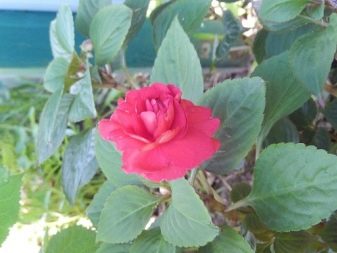
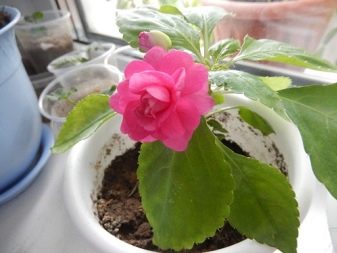
Planting and leaving
Balsam can be grown in any containers suitable for such purposes. And also a cultivated plant can be planted in the garden. The shrub does not like poorly lit areas, so shaded areas are not suitable for planting. But it is worth remembering that direct sunlight on the flower is very harmful to it. And also balsam needs protection from wind and draft.
Since balsam is a very thermophilic plant, then landing should be carried out at a stable air temperature. The most suitable temperature for a plant is +20.25 degrees Celsius. If the air temperature exceeds the optimum, then it is recommended to artificially increase the air humidity indicator. In this case, the plant will not be threatened, and the flowering will be, as promised, abundant. In conditions of high humidity and temperatures below that necessary for normal functioning (up to +18 degrees), the flower begins to ache. Its leaves turn yellow and the roots begin to rot.
Temperatures below +13 degrees will have a detrimental effect on the plant, and subsequently it will die.
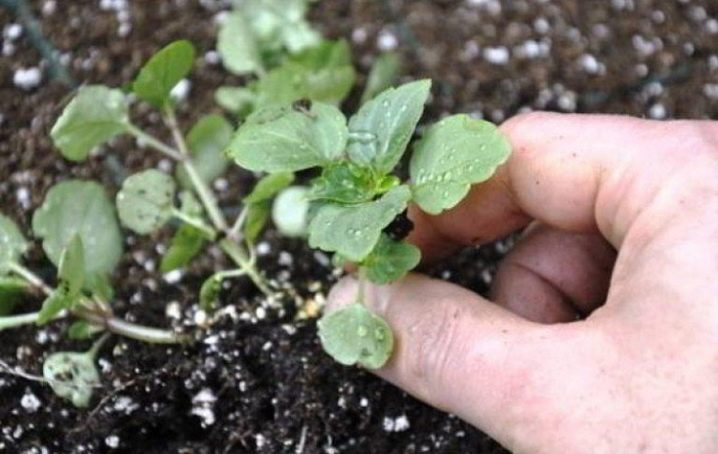
Soil and top dressing
For planting Waller's balsam, a soil dominated by peat is ideal. Many also resort to using an additional component in the form of sand. In order for the plant to take root better in the soil, it is also recommended to use suitable substrates for planting. Be sure to use good drainage to avoid stagnant water. Once every 10 days, it is necessary not to forget to fertilize the plant with special preparations, it is desirable that such elements as phosphorus or potassium prevail in their composition. These beneficial substances will provide the plant with an abundance of flowering. Please note that balsam does not need feeding during the fall season.
Organic fertilizers are not suitable for growing this type of plant.
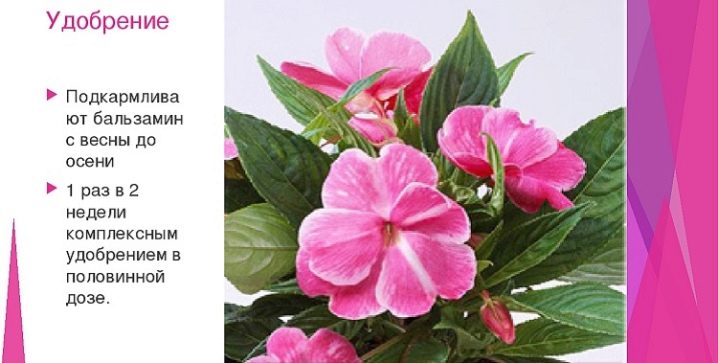
Humidity and watering
Plants of balsamic varieties are considered very moisture-loving, for this reason, you should not spare the amount of water for watering the plant. In the summer season, it is best to water the watering process in the morning. It is advisable to water the flowers at least two or three times a week.If the balsam lacks moisture, then it begins to fade quickly. Before the onset of cold weather, it is recommended to gradually reduce the number of watering. In no case should the formation of an excess amount of moisture be allowed, as this can trigger the process of rotting of the root system. If the flower is grown indoors, then it is necessary to spray it from time to time to increase the moisture level.
Just as in the previous case, the first half of the day will be a favorable time for watering.
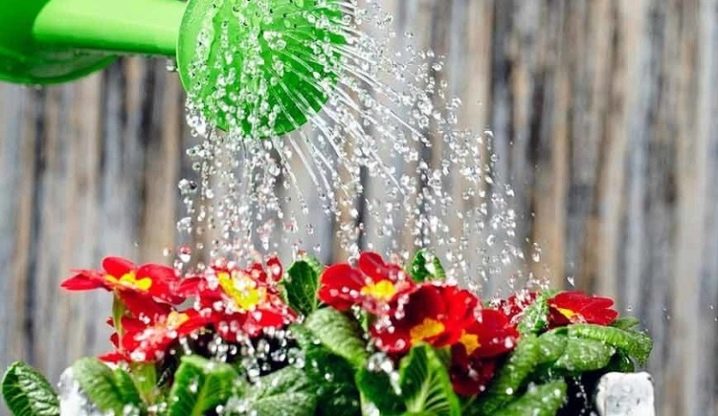
Pruning
An important process when caring for balsam is pruning. A favorable time for its implementation is the spring season, almost after the plant is transplanted. The first step is to shorten the shoots of the plant, followed by the pinching of the top of the stem. This is done so that in the future the bush can grow in width. Pruning also removes unusable leaves and branches of the plant.
If you plan to breed balsam, then the cut shoots are best preserved.
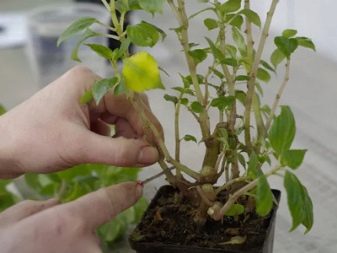
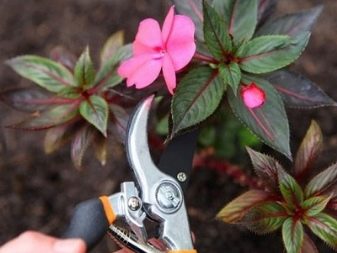
Reproduction and transplantation
There are 2 ways to breed balsam.
Cuttings
The method of propagation of a plant by cuttings is very popular, since this process does not cause great difficulties. Cuttings must be prepared by the end of summer. The next step is to place them in water. After some time, the cuttings should take root, after which the process of planting balsam can be carried out.
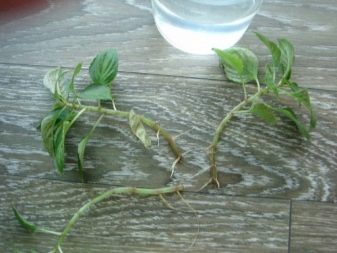
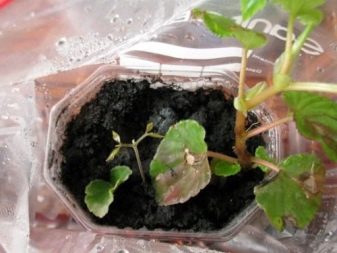
Seeds
Gardeners very often use seeds for growing balsam. After the seed pods turn yellow, you need to collect the seeds for planting. All that is needed for sowing is to prepare a suitable soil. After that, balsam seeds can be safely sown or planted on seedlings. Seeds are planted in a special container. The container is filled with a mixture suitable for balsam, then it should be sprinkled with warm water, after which fertilizer can be added to the planting material.
It is necessary to plant sprouts with a small interval from each other, approximately 4 centimeters. The container is best covered with a lid and placed in a warm place. The optimum temperature will be from +22 to +24 degrees. Occasionally it is necessary to remove condensate from the container. After 2 weeks, the plant should sprout, after which it is necessary to reduce the storage temperature to +15 degrees. After the seedlings have reached at least one centimeter in height, the plant will be ready for transplanting.
It is recommended to sow balsam for seedlings in early spring. You can see the result within the first two months.
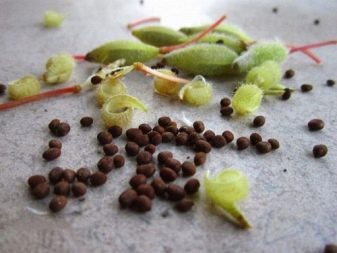
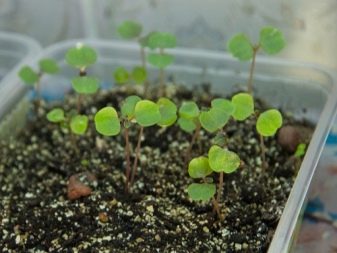
Professional advice
Every gardener has their own plant care secrets. According to professionals, it is very easy to achieve a high-quality result when cultivating Waller's balsam shrubs. To do this, you must follow simple rules.
- Moderate watering. It is undesirable to oversaturate the plant with moisture, since waterlogging negatively affects its root system.
- Do not forget to periodically collect faded flowers from the plant. This will enable the plant to continuously give new color. And also it will prevent the formation of seed pods in a huge amount.
- In order to properly care for the plant, it is recommended to purchase suitable stimulants for the growth and flowering of balsam. And also professional gardeners advise from time to time to feed it with various mineral fertilizers.
- In the middle of autumn before the onset of cold weather it is necessary to cover the plant with a special material. As for the balsam, which is planted in a decorative pot, it must be transferred to a warmer place.
- For Waller's balsam is strongly discouraged. transplant into a container during the cold seasons. In this situation, the chance that the plant will be able to survive is minimized.
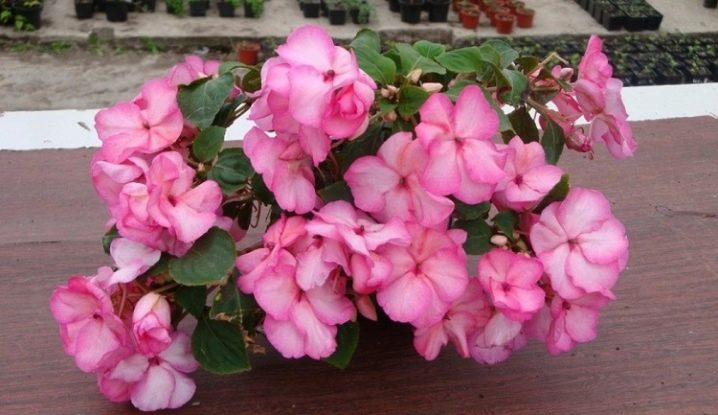
You can find out the secrets of successfully growing Balzamin Waller by watching the video below.































The comment was sent successfully.